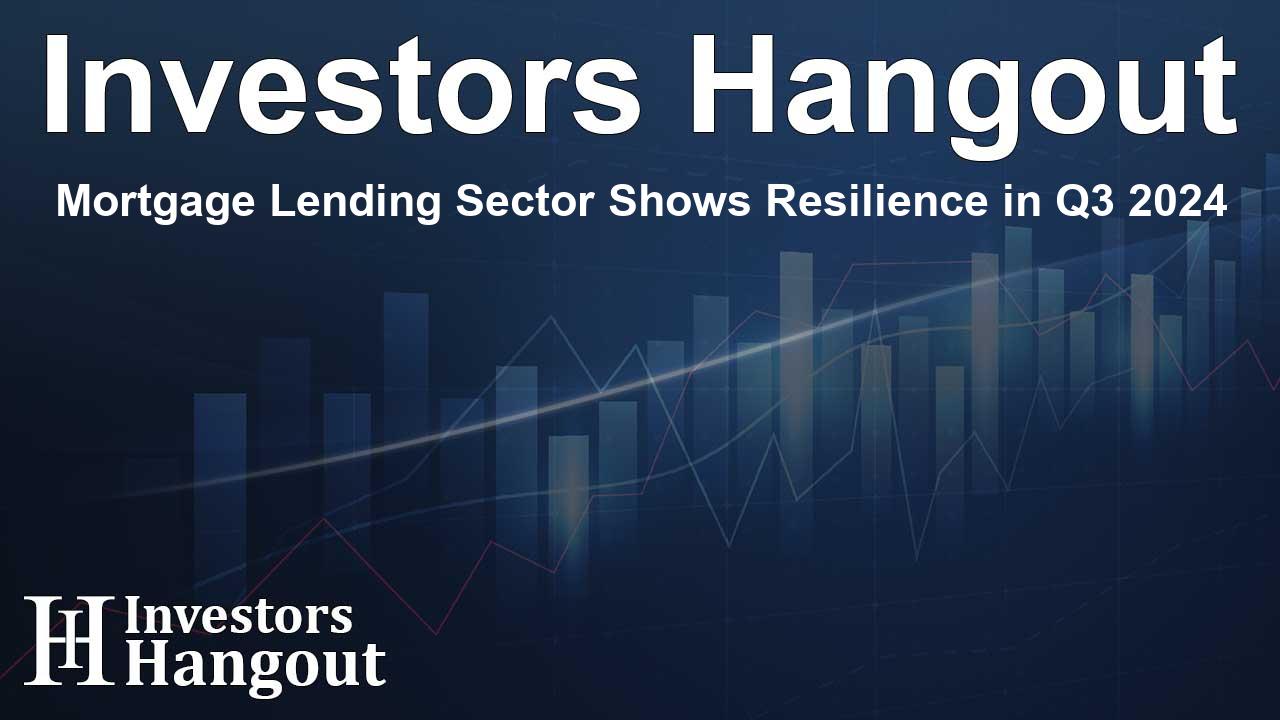Mortgage Lending Sector Shows Resilience in Q3 2024

Recent Trends in U.S. Mortgage Lending
The U.S. mortgage lending landscape has been experiencing some intriguing shifts recently. As reported, a modest uptick of 2% was observed in residential lending despite continuing fluctuations in interest rates. The main contributors to this increase were refinancing and home-equity loans, as purchasing loans saw a notable decrease.
Overview of Mortgage Originations
During the third quarter, approximately 1.67 million mortgages secured by residential properties were issued. This marked a slight increase from previous quarters, indicating a recovery trend that had not been seen for some time. However, the overall volume of mortgages remains significantly below the historic highs noted before 2021.
Refinance Activity on the Rise
Refinancing activity in the mortgage sector rose substantially, with a reported 588,000 refinances occurring, an increase of 6.9% from the previous quarter. This uptick is likely attributed to homeowners capitalizing on the decreasing mortgage rates, opting to switch from higher-rate loans secured earlier in the pandemic years.
Declining Purchase Loans
Conversely, the number of purchase loans issued saw a decline of 1.7%, with around 782,000 mortgages taken out for new home purchases. This decline can be linked to persistent high home prices and limited supply, factors that continue to challenge potential buyers in the current market.
Analysis of Total Lending Activity
Despite the challenges, lenders issued approximately $550 billion worth of residential mortgages in the third quarter. This amount reflects an increase from previous quarters, signaling a gradual recovery in the market. However, the levels remain noticeably lower than the peaks of 2021, when lending activity was at an all-time high.
Implications of Interest Rate Changes
Interest rates fell significantly, with average rates for 30-year fixed loans nearing 6%. While this decline allows for potential savings for homeowners, the tight housing inventory has prevented more pronounced effects on purchase lending. Many buyers continue to find themselves dissuaded by elevated property prices amidst the slow recovery of the housing market.
Trends Across Metropolitan Areas
Lending trends varied across the United States, with notable increases in various metropolitan areas. Some regions, such as Anchorage, AK and Yuma, AZ, saw substantial quarterly growth in lending activity, which indicates a broader trend of regional variations in the housing market. On the flip side, there were areas like Boulder, CO, reflecting dramatic declines, illustrating the ongoing complexities in the market dynamics.
FHA and VA Loans in Focus
The Federal Housing Administration (FHA) backed a steady number of loans in Q3, maintaining its foothold in the market. Additionally, loans supported by the Veterans Affairs (VA) department increased, accounting for a rising percentage of overall loans, a sign of strengthening support for veterans in home financing.
Market Future Outlook
Looking ahead, the consistent drop in mortgage rates coupled with ongoing improvements in refinance activity may signal a continuing trend toward increased borrowing in the mortgage sector. However, the prevailing challenges—high home prices and low inventory—will likely constrain substantial progress in purchase loans for the foreseeable future. Stakeholders in the mortgage industry are watching these developments closely to gauge the implications for lending practices moving forward.
Frequently Asked Questions
What is the current state of mortgage lending in the U.S.?
Mortgage lending has seen a slight increase of about 2% in the third quarter of 2024, primarily driven by refinancing.
How have interest rates affected mortgage lending?
The decline in mortgage interest rates has encouraged refinancing, but tight housing supply continues to affect new purchase loans.
Which type of loans has seen the most activity recently?
Refinancing loans have seen the most activity, with a notable increase in the number of loans processed recently.
Are FHA and VA loans increasing?
Yes, both FHA and VA loans have seen stability and growth, indicating strong support for various buyer categories.
What does the future hold for the mortgage market?
The future may see continued refinances due to low rates, but high home prices and inventory issues will be challenges for new purchases.
About Investors Hangout
Investors Hangout is a leading online stock forum for financial discussion and learning, offering a wide range of free tools and resources. It draws in traders of all levels, who exchange market knowledge, investigate trading tactics, and keep an eye on industry developments in real time. Featuring financial articles, stock message boards, quotes, charts, company profiles, and live news updates. Through cooperative learning and a wealth of informational resources, it helps users from novices creating their first portfolios to experts honing their techniques. Join Investors Hangout today: https://investorshangout.com/
Disclaimer: The content of this article is solely for general informational purposes only; it does not represent legal, financial, or investment advice. Investors Hangout does not offer financial advice; the author is not a licensed financial advisor. Consult a qualified advisor before making any financial or investment decisions based on this article. The author's interpretation of publicly available data shapes the opinions presented here; as a result, they should not be taken as advice to purchase, sell, or hold any securities mentioned or any other investments. The author does not guarantee the accuracy, completeness, or timeliness of any material, providing it "as is." Information and market conditions may change; past performance is not indicative of future outcomes. If any of the material offered here is inaccurate, please contact us for corrections.